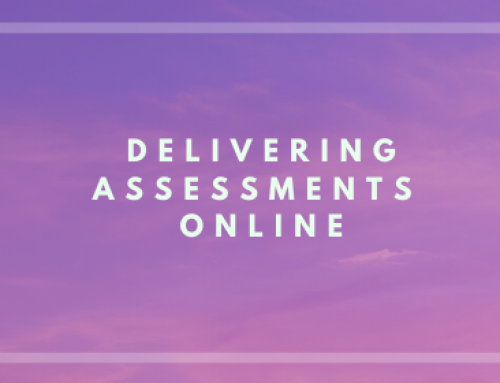Providing Video and Audio feedback
Supporting student success
Purpose
Feedback plays an essential part in student success and providing that feedback in modes outside of the written word, including audio/video, has been shown to have a positive impact on the student experience.
In 2008, a study by Dagen, Mader, Rinehart & Ice indicated that students believed audio/video ‘feedback to be more detailed, personal, in-depth, specific, and constructive than text-based feedback’ (Dagen 2008, p.157).
Learning Context
Providing feedback to students ‘is an important part of university assessment procedures’ (Knauf 2016, p. 1). Feedback can also include ‘feedforward’ elements to assist students, as research has shown that ‘students want feedback not only to provide constructive criticism on current work, but also guidance on how to improve on future work’ (Moore & Wallace 2012, p. 1). This is in line with RMIT policy which states that ‘[a]ssessors are expected to provide students with marks and feedback on in-course assessment work in time for students to improve their performance in related assessment tasks later in the course’ (RMIT University 2018, p. 10).
Two questions we may ask ourselves are: What type of feedback do we provide our students? and How will this feedback be structured? Research has shown that a good format to follow is by being ‘prompt, starting off with a positive comment, using informal language and offering personal help’ (Moore & Wallace 2012 p.6).
Video feedback has been used in higher education for over 50 years with Stanford University the first to explore the educational application of video feedback (Allen 1966). Exploring feedback modes outside of the written word opens-up new ways of communicating with students. Today’s students have different needs to the students of years gone by and it is ‘clear that the different needs of students can best be catered for with a variety of forms of communication’ (Knauf 2016, p. 1). Canvas provides an easy way for you, the instructor, to provide audio and video feedback.
Henderson and Phillips (2015) suggest students found video-based feedback to be more individualised and personalised than text-based feedback, while West and Turner (2015) note that video feedback can be easier to comprehend and act upon. Experimenting with video feedback can improve a student’s perception of their instructor’s efforts in providing tailored communication; this may help to foster a stronger teacher-student relationship.
Resources
References
- Allen, DW 1966, ‘A new design for teacher education: The teacher intern program at Stanford University’, The Journal of Teacher Education, 17(3), 296–300, viewed 16 January 2019, < LINK >.
- Dagen, AS, Mader, C, Rinehart, S & Ice, P 2008, ‘Can You Hear Me Now? Providing Feedback Using Audio Commenting Technology’, College Reading Association Yearbook, 2008, iss. 29, pp. 152-166.
- Henderson, M & Phillips, M 2015, ‘Video-based feedback on student assessment: Scarily personal’, Australasian Journal of Educational Technology, 31(1), 51-66, viewed 16 January 2019, <LINK>.
- Knauf, H 2016, ‘Reading, listening and feeling: audio feedback as a component of an inclusive learning culture at universities’, Assessment & Evaluation in Higher Education, 41:3, 442-449, DOI: 10.1080/02602938.2015.1021664
- Moore, C & Wallace, M 2012, ‘Personalizing Feedback for Feed-Forward Opportunities Utilizing Audio Feedback Technologies for Online Students’, International Journal of e-Education, e-Business, e-Management and e-Learning, Vol. 2, No. 1, February 2012, viewed 16 January 2019, <LINK>
- RMIT University 2018, RMIT Assessment Processes August 2018, viewed 16 January 2019, <LINK>
- West, J & Turner, W 2015, ‘Enhancing the assessment experience: Improving student perceptions, engagement and understanding using online video feedback’, Innovations in Education and Teaching International, 38(2), 240-252, viewed 16 January 2019, <LINK>





